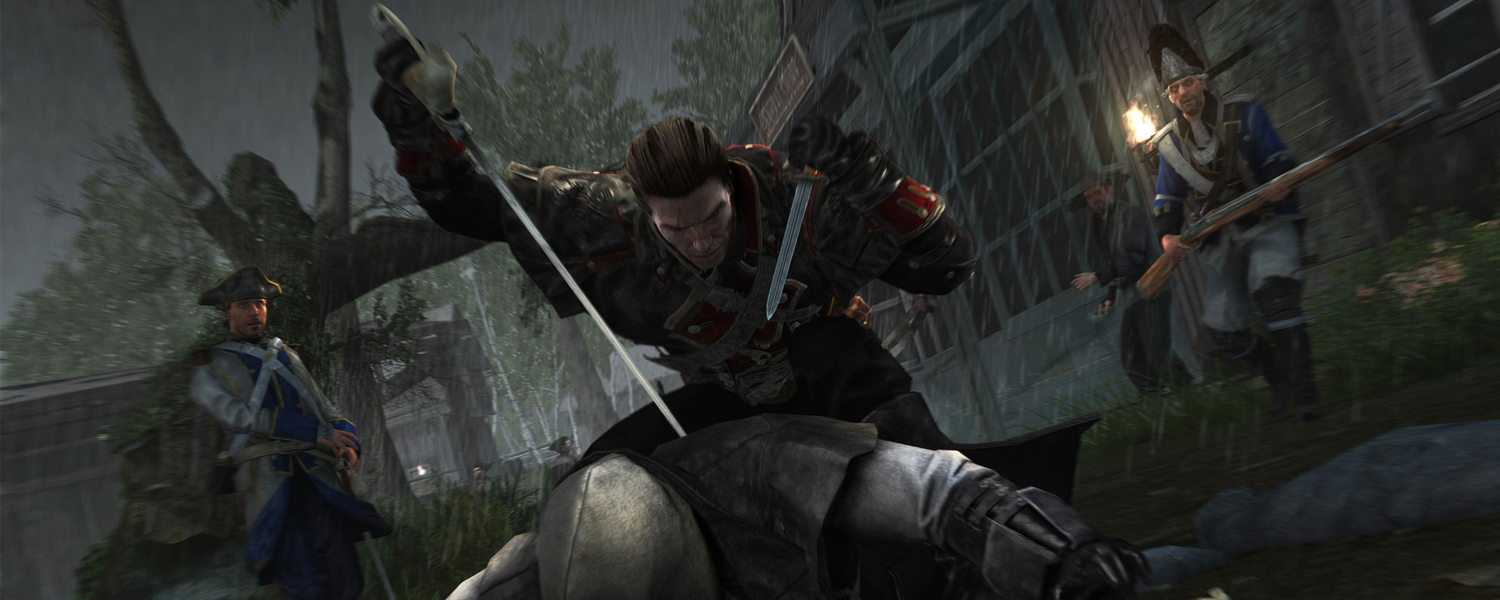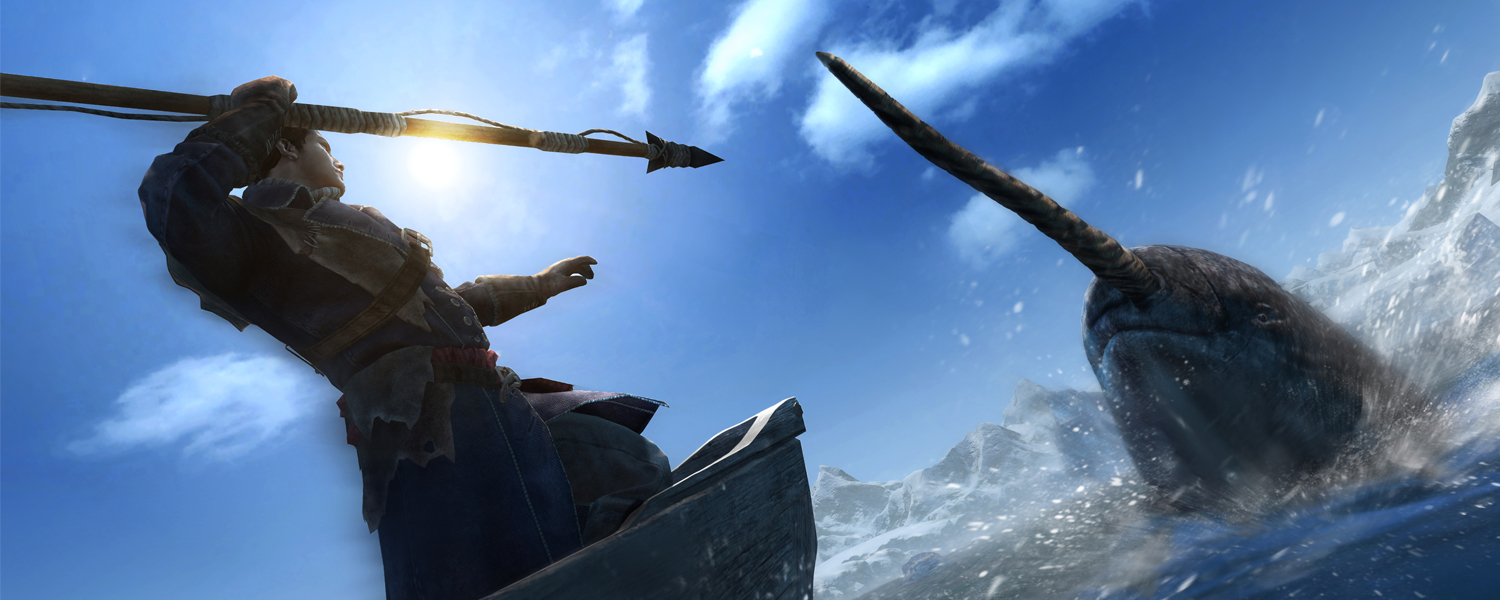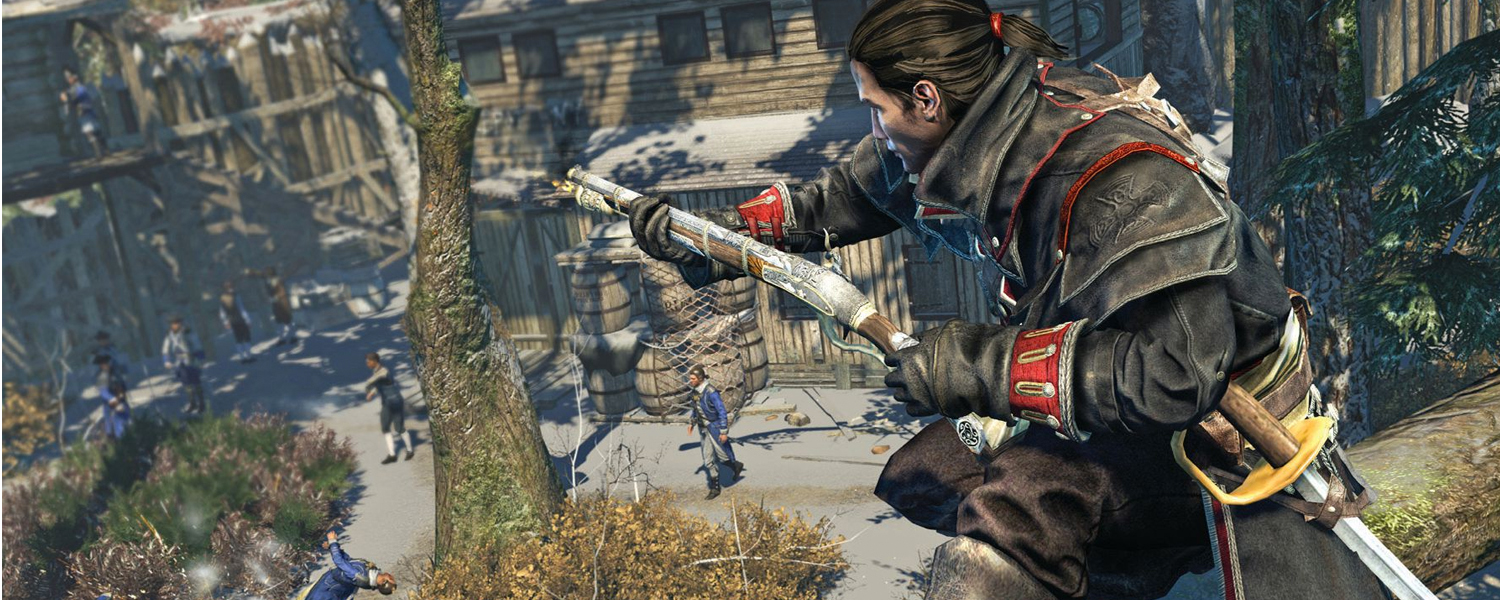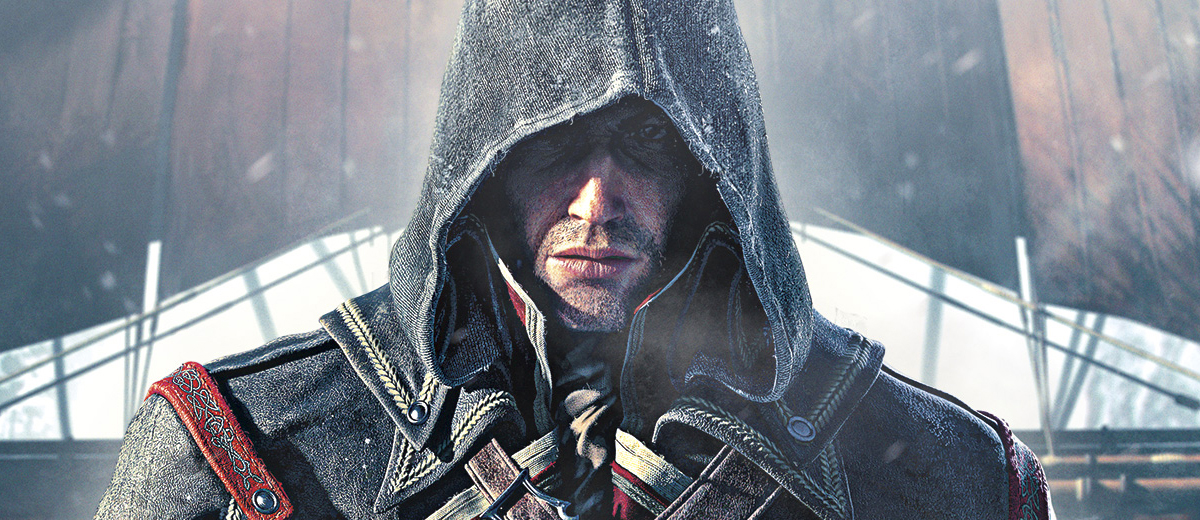When Rogue was announced to be coming out around the same time as Unity, I decided that I’d be playing Rogue first, just for the interesting concept the story took. We’ve had plenty of time hanging out with the Templars, but having the main character turn on his former friends? Sounds like a great tale of betrayal, revenge and all that good stuff Well…

So as I was saying, the concept of the story pulled me in; piqued my interest in what an Assassin’s Creed game could be. All the stuff I was expecting was there, for sure, alongside a few of returning characters from both Assassin’s Creed III and Black Flag. But ultimately, the ‘bigger picture’ style of story telling overshadows any real character development.
The game follows Shay, an Assassin trainee with a knack for the Assassin business. One of his missions ends up with him inadvertently destroying a city, and when he learns his Assassin buddies have no intention to stop messing around with Precursor artefacts, the kind that level cities, Shay turns on his friends to stop them, eventually ending up with the Templars. It all sounds good in theory, but the actual delivery of story is all over the place, changing locale maybe 2-3 times per chapter, and with the less interesting “Assassin’s vs Templars” story taking precedence over the much more interesting story of Shay and his personal war.

The modern day stuff makes a return as well, following on from Assassin’s Creed IV. You’re still a cubicle worker at Abstergo Entertainment, but you manage to accidentally crash the entire network while accessing Shay’s memories. But with Rogue being a much shorter game, there isn’t much to do outside the Animus, but the ending is interesting, none-the-less.
Also, having Captain Cook show up in the game is a bit of a treat for us Aussies, even if he does remind me of Ringo Starr.

My biggest gripe with this game is the inconsistent quality of voice acting. Shay sometimes sounds like he’s delivering lines casually, as if his actor was checking Facebook while recording. His first mate, Gist, also sounds like a drama student trying to make an incredible first impression at an audition. I feel mean for putting it like that, but when I’m focusing more on how they’re saying their lines, instead of the actual words they’re saying, it breaks the immersion in a huge way.

The visuals in this game, however, are amazing. I mean, going back from PS4 stuff to PS3, there’s a lot of problems I pick up, but it’s all made up with the North Atlantic ocean areas, with icebergs, snow, and breaking through ice sheets with my ship just feels satisfying. The ship also gathers snow and ice on the deck when sailing through snowfall, just a little detail that adds a lot! And with locations, New York looks great, but unfortunately is under-utilised in the game overall. Everything else feels mostly like IV, with beaches and island towns… nothing amazing, but necessary for exploration.

In terms of gameplay, the entire thing feels like a large expansion of Assassin’s Creed IV. Which is fine, it’s familiar, and the locations are vastly different. But there’s not a lot of new features in the game that help me differentiate the two games. On foot, you have a few new toys to cause mayhem with, like the grenade launcher, with both shrapnel and gas varieties. The gasses are just like the darts, letting you either make a small group fall asleep, or berserk.
New York has a couple interesting features, with gang hideouts you can capture, and renovating buildings. Gang hideouts, which are really just Assassin bases, play the role of territory control, with you clearing out the base and letting the British army take over. However, the leader of each base is Assassin trained, leading to either a satisfying finish when you manage to kill them, or a very frustrating half an hour of being shot at through walls. Sadly, I had more experience with the latter, and didn’t capture any beyond the story mission base. Renovations let you restore buildings, but it really isn’t explained much through the game the advantages of doing so.

As much as this can be taken as a complaint, it can also be taken as a warning; upgrade your ship during the game. That means avoiding fast travel. One of the last few missions in the game requires your ship to be much more powerful and armoured than mine actually was at that point, unfortunately because I had been skipping a lot of naval battles by using fast travel to move from place to place. The game had a tendency to shift locale way too many times during chapters, or sequences, as I stated earlier. So by the time I got to this mission, I was hilariously outgunned, leading to a lot more frustration toward the game than my own abilities.
The last thing to add is the addition of ‘stalker’ enemies. Naturally, with your enemies in this game being assassins, you’re going to get ambushed from the bushes, or building tops. It adds a strange twist, as now you kinda get a feel for what it’s like on the other side of the hidden blade. However, the sudden realisation that you’ve wandered into an area with hiding enemies is annoying, as sometimes they’re in chase sequences, which the only purpose they can serve is to mildly annoy you and slow you down.



